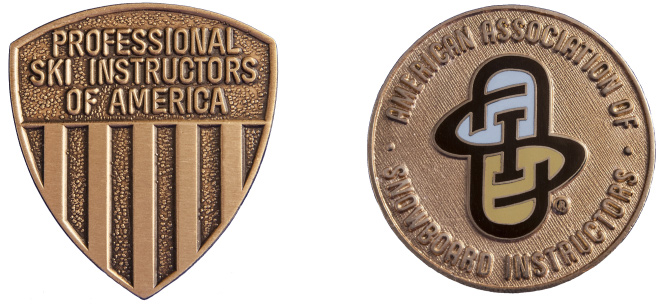A couple years ago I sat down with PSIA-AASI National Team Coach Jeb Boyd and his brother, PSIA Alpine Team Development Coach Matt Boyd, for a wide-ranging conversation about the many ways in which junior instructor programs benefit their participants.
Three of the top takeaways included how each young instructor gets to develop their public speaking ability, learn team-building skills working with their lesson groups, and also understand how to set goals and make lesson plans to individually benefit each of their students.
When Jeb and I recently rekindled that conversation, we wondered what the junior instructors – and really any experienced snowsports instructor – would say were the top ski and snowboard teaching skills they regularly apply to aspects of their lives. So we asked.
This question was posted on the PSIA-AASI Facebook and Instagram pages: “We’ve heard some interesting stories from people who use their training in snowsports in other parts of their lives. Like a nurse who uses People Skills to connect with their patients, a lawyer who uses Teaching Skills to help with public speaking, a parent raising kids, or a raft guide cruising the river. How do YOU use your instruction skills in other parts of your life?”
Here are just a few of the interesting replies. Please add your voice to the conversation on Facebook or Instagram.
“In my job as a mediator, the active listening skills are interchangeable. Also, the speaking skills now that I teach mediation and conflict resolution skills.”
– Lisa Wood
“Teaching children has helped me in my interactions with my young grandkids, and those interactions have given me insights in teaching, all of which has improved my comfort zone. Always learning!”
– Rick Payer
“Currently studying to be a licensed social worker and already knew all about Maslow and Piaget from snowsports! And just transferred my people skills over to social work.”
– Colleen Blanton
“I used the teaching, people, and communication skills (and the applied knowledge of the unified assessment sheets) to write a guide school curriculum and advanced training plan for the guides at the rafting company I manage.”
– Tera Adams
“As an individual who suffered multiple fractures and a traumatic brain injury through no fault of my own, I am grateful to be alive. There are countless tools I learned from my ski, ski teach, and coaching career, from my idols, trainers, peers, and my guests. Those tools have been returning to me slowly but surely. I have been relearning many everyday tasks, which I was autonomous with prior.
The tool I used the most was recalling the three stages of learning – cognitive, associative, autonomous – so as I rehabbed physically and mentally, I could recognize where I was at in the process.”
– Ben Nilsson
“When I turned 70 in 2021, I retired from teaching skiing and took up field archery to keep in shape and have fun. Since I am one of the few compound bow shooters in my archery club, I sometimes explain to club members how a compound bow shoots as compared to a bare bow or re-curve bow. When I do this, I am back on the snow giving a group lesson. I am seriously contemplating getting my Level I teaching certification from the USA Archery. Just like PSIA, you have to attend classes and complete a practical exam.”
– Paul T. Purpura
“I’m in the U.S. Navy and I learned ‘servant leadership’ while being in ski school. I use that approach to lead my unit.”
– Cole Von Cole
PC: Micheli Oliver

